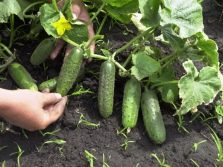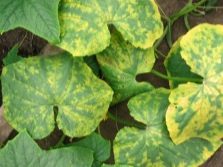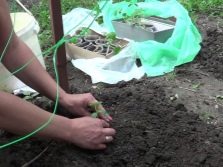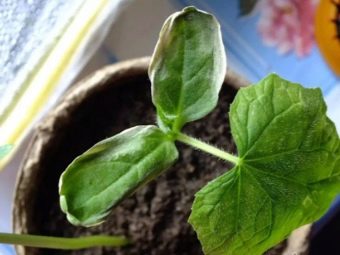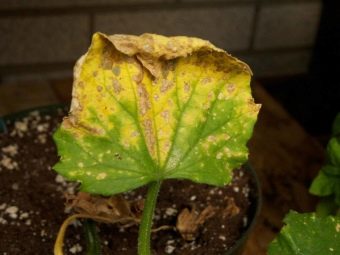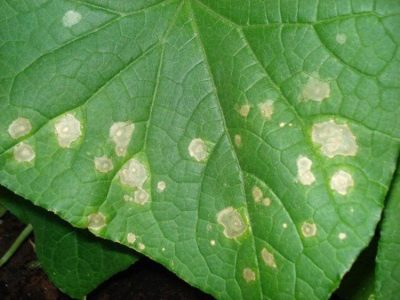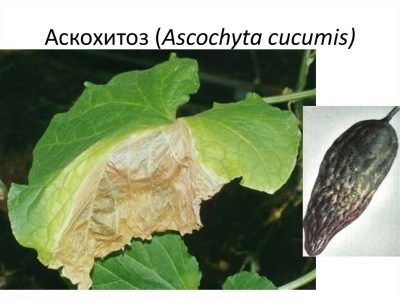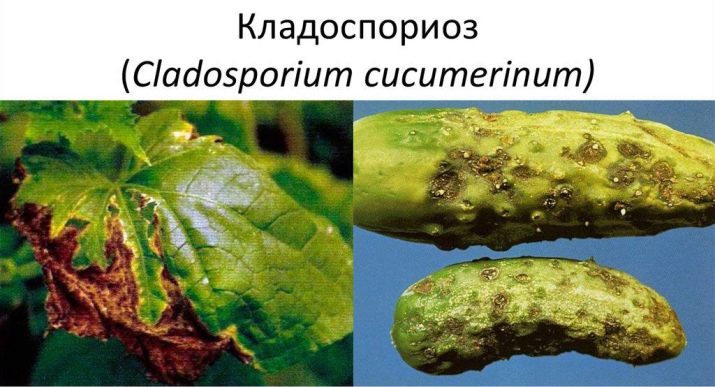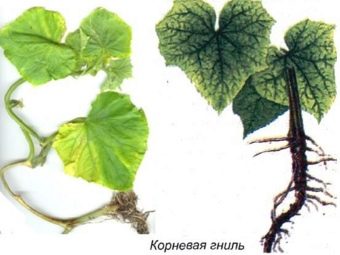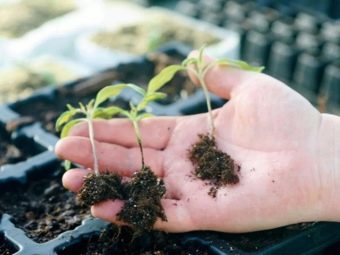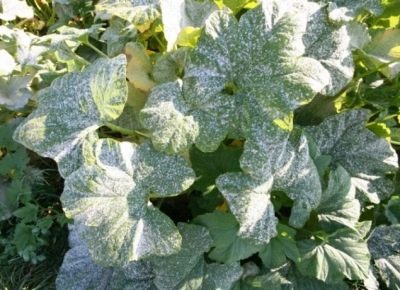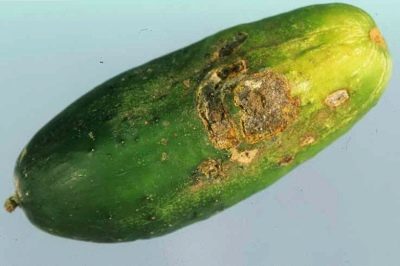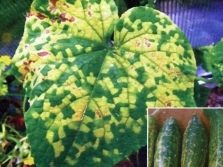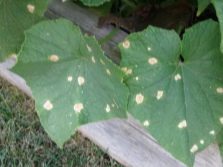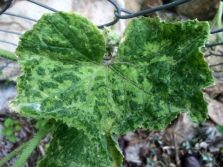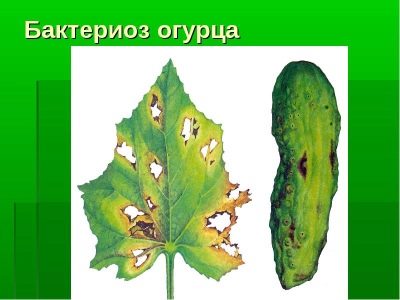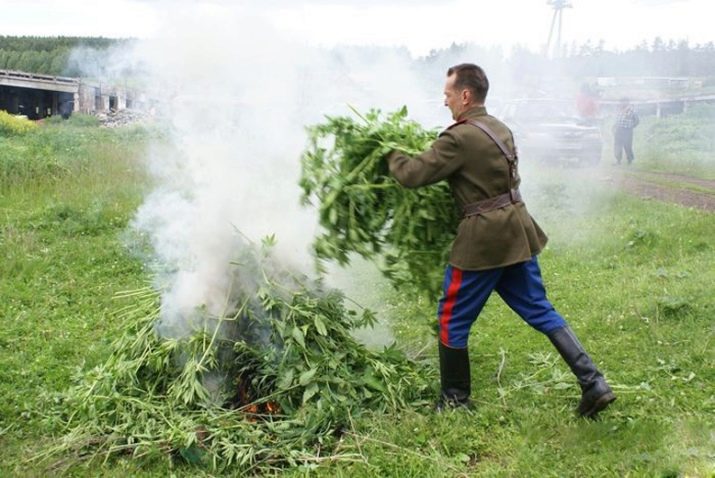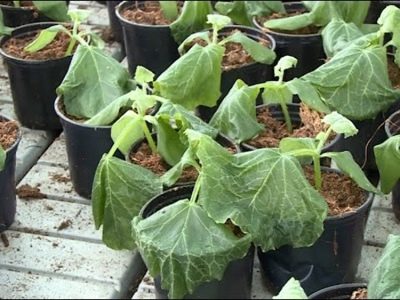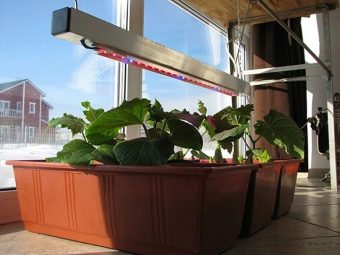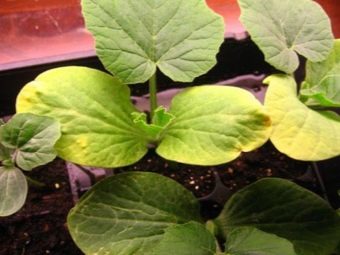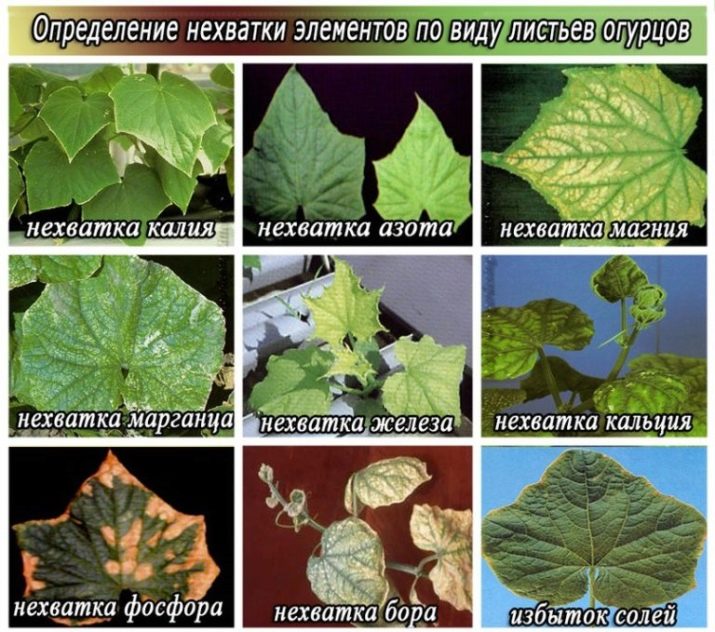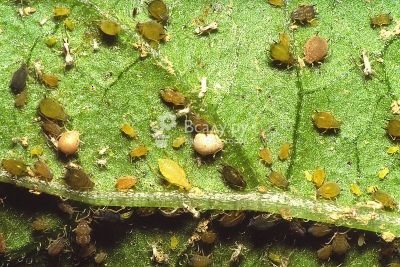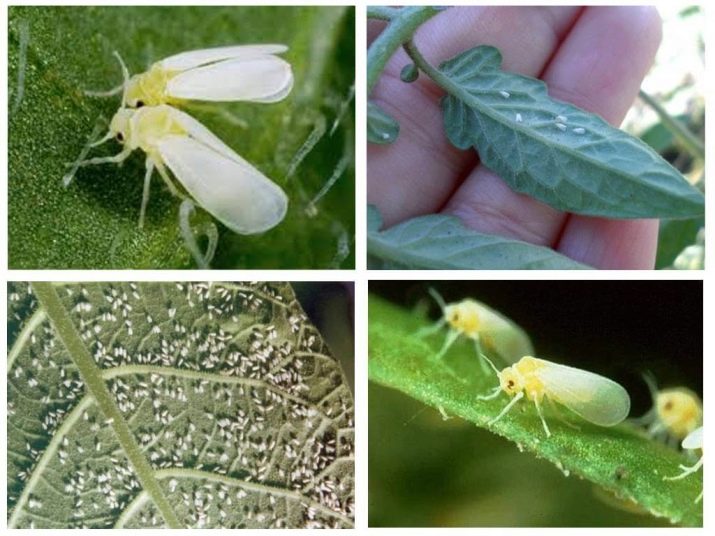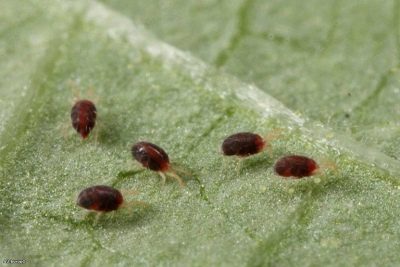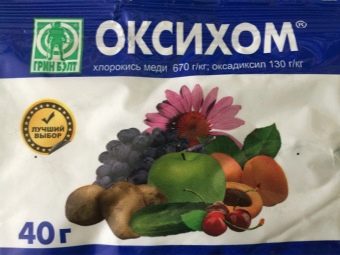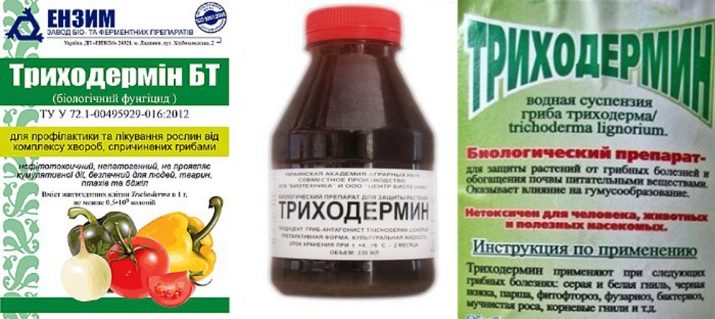Diseases of cucumber seedlings: symptoms and treatment
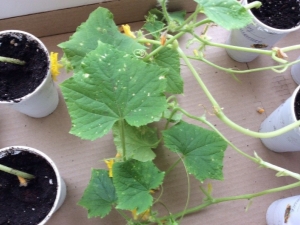
Cucumber is the most common vegetable planted by gardeners. It occupies up to thirty percent of the area in gardens. However, to grow a rich harvest of this crop, it is necessary to know not only all the agronomic characteristics, but also the diseases that afflict cucumbers. After all, they can cause significant damage to the bushes, and in some cases even completely destroy them.
Types of diseases
To avoid this, it is necessary to study well all the diseases of cucumber seedlings. They can be divided into several groups. These are viral, fungal and bacterial diseases. First you need to consider a description of all these diseases in more detail.
Fungal
Fungal diseases affect cucumbers most often. It is worth considering a list of the main diseases that gardeners face.
- Alternaria - This is a disease that affects cucumbers in greenhouses. It lowers the yield after six weeks, after its development. At first, the plants that are closest to the entrance of the greenhouse fall ill. The lower leaves are covered with small convex spots that have a brown tint. Their maximum size reaches two centimeters. These dry spots may also be located on the leaves; and at their edges, and in the middle. Alternaria develops best at fairly high temperatures and high humidity. To stop it, it is necessary to lower the humidity to sixty percent. Even after harvesting, the viruses remain on the leaf or on their seeds.
To protect the plant will suit any means of fungal diseases of cucumbers.
- Ascohitosis - This is another disease typical of cucumbers grown in greenhouse conditions. This disease eats up to half the crop. It affects only weak bushes. First, on the stems you can see roundish greenish spots. When white spots appear, it means that the plant is completely infected. This disease affects both the leaves and the fruits, which can rot completely. This kind of fungus can not breed in the ground, it is transported only with the help of seeds or residues from cucumbers. The peak for its development is April. At this time, the greenhouse is not ventilated and the high temperature and humidity help to spread this disease.
- White rot very common in enclosed spaces. The bush disappears from the strong toxic secretions of white rot. In those places where the infection occurred, there are mycelium with a white tinge, which after a while become black. The stems are watery. If the stems are in contact with each other, the disease proceeds very quickly. This fungus can be stored both in the ground and on plant residues. To combat it, preventive work is carried out, and chemical preparations are used, for example, Trichodermin.
- Cladosporiosis also distributed in greenhouse conditions. This disease affects only the fruits that have appeared. With high humidity, losses can reach fifty percent. The first symptoms appear on the outer parts of the cucumbers. These are usually brown spots that later change color to olive. In addition, on the inner side of the leaves appear mycelium, which have a loose appearance. Fruits infect small sores. The disease quickly moves from diseased plants to healthy ones, and with an increase in moisture, the process is still accelerated. Sources of this disease are conidia. They are perfectly preserved both on the remains of cucumbers, and on the weeds, and even on the wire. Now breeders brought out several varieties of cucumbers that are resistant to the disease.
If ordinary seeds were purchased, it is necessary to carry out preventive measures, treating them with various preparations.
- Root rot or black leg most commonly affects weak plants.It is considered the most harmful disease and applies not only to fungal diseases, but also to viral and bacterial diseases. The first symptoms of this disease is the withering of most of the shoots. The seedlings wither and can disappear completely during the day. Sick plants are covered with white spots. A constriction is formed on the root system, while the root darkens and becomes thinner, and then rots altogether. The carrier of the disease are also the remains of plants and contaminated soil. To combat the root rot need to use chemicals, as well as do sevosmenu.
- Mealy dew - This is the most common disease of cucumbers grown in greenhouse conditions. It can kill more than half the crop. The appearance on the lower parts of the leaves of white plaque is considered the beginning of the disease. Later they increase and darken, and the leaves change shape. Fruits remain the same, but their taste becomes bitter, and at the end the cucumber plants wither and dry. As in other cases, malicious disputes remain in the ground and on plant residues. In addition, recently, this type of fungus has adapted to many fungicides, so experienced gardeners recommend purchasing new products such as Falcon and Topsin-M.
- Rhizoctoniosis. This disease can affect plants in the open field and in greenhouse conditions. It is quite harmful and as a result of the defeat of cucumbers it can be left completely without a crop. Risoctoniosis affects almost the entire plant. Does not affect the disease only its flowers. The leaves are covered with spots, and the fruits are brown ulcers, and as a result the plant dies. This disease develops under any circumstances, because the source of infection is mainly the earth. To overcome it, it is necessary to properly cultivate the earth and destroy all the remnants of the plant.
Viral
For this type of disease is a change in the shade of the leaves. They are covered with spots that look like mosaics. At the same time, the leaves themselves curl and become wrinkled. Any viral diseases can be transmitted through seeds or transported with pests. Therefore, before planting seeds in the ground, it is necessary to disinfect them. To do this, they are placed in the oven and heated there at a temperature of +70 degrees.
Mosaic appears on very young leaves already on the thirtieth day after planting. The leaves are covered with yellow spots and also change their appearance. If you skip this step, then within a few days all the fruits can become infected. One of the peddlers of this disease is aphid. Cucumber mosaic is of several types. For example, a white mosaic is characterized by the presence of white spots in the form of stars. With this disease, white stripes appear on cucumbers, and it spreads with the help of seeds.
There is also a green mosaic. However, it affects only the young leaves of the plant. They become covered with growths and wrinkles. Plant growth stops, yields fall. Virus green mosaic can winter in any pumpkin plant, as well as in the seeds of cucumbers. In contrast, an ordinary cucumber mosaic is not tolerated by seeds, and it can transfer winter on weeds.
In order to prevent the need to remove all weeds from the garden, as well as planted varieties that are resistant to the disease.
Bacterial
The most common bacterial disease is bacteriosis. It is also called angular spotting. This disease most often develops in open areas, although it also exists in the greenhouse. It eats up half of the crop, even sprouts die. It develops in a humid environment.
The main signs of bacteriosis are as follows:
- rapid wilting of the whole plant;
- the presence of white sticky slurry released from the stems of the plant;
- the appearance of spots on the leaves.
Bacteria can live on leftover cucumbers until spring, but they die in the ground. Therefore, in the autumn after the end of the harvest, it is necessary to burn all dry residues. And also for five years it is not recommended to plant any plants of this species on this site.
In order to prevent the need to choose only a healthy planting material. And you can also apply Bordeaux mixture.
Causes of pathologies
There are many reasons why a plant dies. Among them - the wrong temperature, as a result of which the seedlings even frostbitten. With strong temperature changes the disease develops very quickly. And also if the crop rotation is not observed, cucumbers can also hurt. With poor lighting cucumber seedlings become pale green, which has a bad effect on productivity.
Improper care
One of the causes of seedling disease can be improper care.
- Very often, cucumbers turn yellow with improper watering of plants. If moisture is lacking, the leaves and fruits become yellow, especially for sandy soils, where the water immediately goes away. With too much moisture, the root system may rot, eventually the leaves will wither and turn yellow. To avoid this, it is necessary to regulate the watering of plants, and after each watering it is necessary to loosen the earth under the cucumbers. So, in hot and dry weather it is necessary to water cucumbers up to five times a week, if the days are very hot, you can do it every day. Additionally, you need to make sure that the water was not cold, for this you can use separated water. With cool and cloudy weather, watering cucumbers is not worth it.
- Equally important is the lighting. The site must be not only well lit, but also protected at the same time. With insufficient light, cucumbers become yellow and weak.
- Planting is of great importance.. It is better to plant them with seeds at a distance of up to twenty centimeters from each other. Between the rows there should be a distance of not less than seventy centimeters. In addition, the earth should be well heated, at least up to +10 degrees. Sit cucumbers to a depth of four to six centimeters.
- It is important to monitor the lateral shoots of the plant. When they grow twenty centimeters, they need to pinch. This should be done regularly so that they do not take nutrients from the plant, as well as to strengthen the root system.
Lack of power
Top dressing is of great importance for the harvest and the state of the plant itself. With the correct introduction of all the necessary substances, the cucumber plant will develop well and the harvest will delight the gardeners. If there is an excess or lack of fertilizer, the leaves may turn yellow, and fruiting will decrease. The following symptoms of mineral fertilizer deficiencies should be considered:
- with a lack of nitrogen leaves will become a yellow-green shade;
- with a lack of phosphorus shoots will stop growing, and the leaves will become dull;
- with a lack of potassium, the leaves will wrinkle and turn white;
- with a lack of calcium, old leaves quickly wilt and die;
- with a lack of manganese, the leaves become small and light;
- with a lack of magnesium, the edges of the leaves become very brittle, small specks appear on them;
- if there is not enough boron, new shoots cease to form and the plant completely stops growing.
Pests
Most of the diseases spread by various pests that, in addition, cause irreparable damage to the crop. So you can see that cucumbers like something gnawing. There are some of the most famous pests.
- Tlya melon. This type of pest appears in late spring or early summer. Aphids can be on cucumbers for the entire growing period, including at the moment when they are only small shoots. To get rid of it, it is necessary to remove heavily infected leaves, as well as use folk remedies. For example, make an infusion of garlic or onions.When a large number of aphids need to use chemicals.
- Whitefly. Such insects are dangerous only in greenhouse conditions. To combat them, you can use chemicals, such as "Tanrek" or "Confidor". It is necessary to process the leaves from the bottom, as the bulk lives there.
- Spider mite These insects live in open areas and in greenhouses. They can be transported by wind and other insects. To get rid of them, it is worth using chemicals, as well as folk remedies.
Remedies
To eliminate any diseases in the garden where cucumbers are placed, It is necessary to carry out treatment in the following ways and at different stages:
- spraying seeds;
- root treatment during transplantation;
- if the disease is too much hit the crop, then you can water all the bushes with different mixtures;
- you can use spraying plants, it is carried out when at least two infected leaves appear, and so every 10–12 days, which depends on the development of the disease;
- removal of weeds and plant residues; For this, you can use both chemical preparations and folk remedies, for example, in case of powdery mildew such drugs as Oxyh and Topaz are used.
Many use biological products. Among them, the most popular is "Trichodermin". It can be used against bacteriosis, root rot, powdery mildew, and many other diseases.
Eighty milliliters of solution per ten liters of water is enough to process the plants. After processing such a drug, after two days you can pick cucumbers.
Another biological drug is Planriz. It is used to get rid of powdery mildew, root rot, bacteriosis and other diseases. They can do the processing in the same sequence as with the previous preparation. Bordeaux mixture can also be used. Its use is possible with diseases such as late blight, root rot, ascohitoz, and often it is also used simply for prevention.
Quite often used to combat the cucumber disease drug "Topsin-M". It is used both as a preventive measure and to combat many serious diseases.
Preventive measures
Not everyone wants to use chemicals. To avoid this, you need to carry out a number of preventive works, among which it is worth noting the following:
- it is mandatory to do crop rotation;
- carry out treatment with means for disinfecting both the greenhouse and the plot in the garden;
- avoid thickening the area with cucumbers;
- make ventilation in the greenhouse;
- use only warm water for irrigation;
- regularly loosen the soil;
- in case of severe diseases, the affected parts must be removed or even completely burned;
- do not forget to disinfect seed;
- time to remove diseased shoots or even bushes;
- at the end of the season, it is necessary to process all the remains of copper sulfate, and then burn them.
Diseases of cucumbers and methods of dealing with them, there are a large number. However, if you study them well and carry out preventive work on time, you can get a wonderful harvest.
All about cucumber disease and their treatment, see below in the video.

